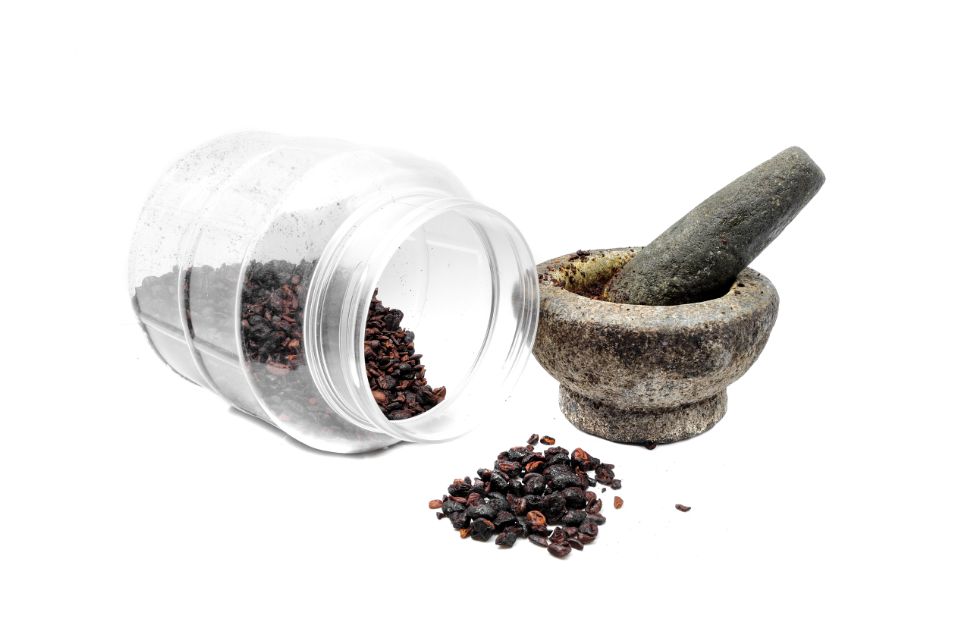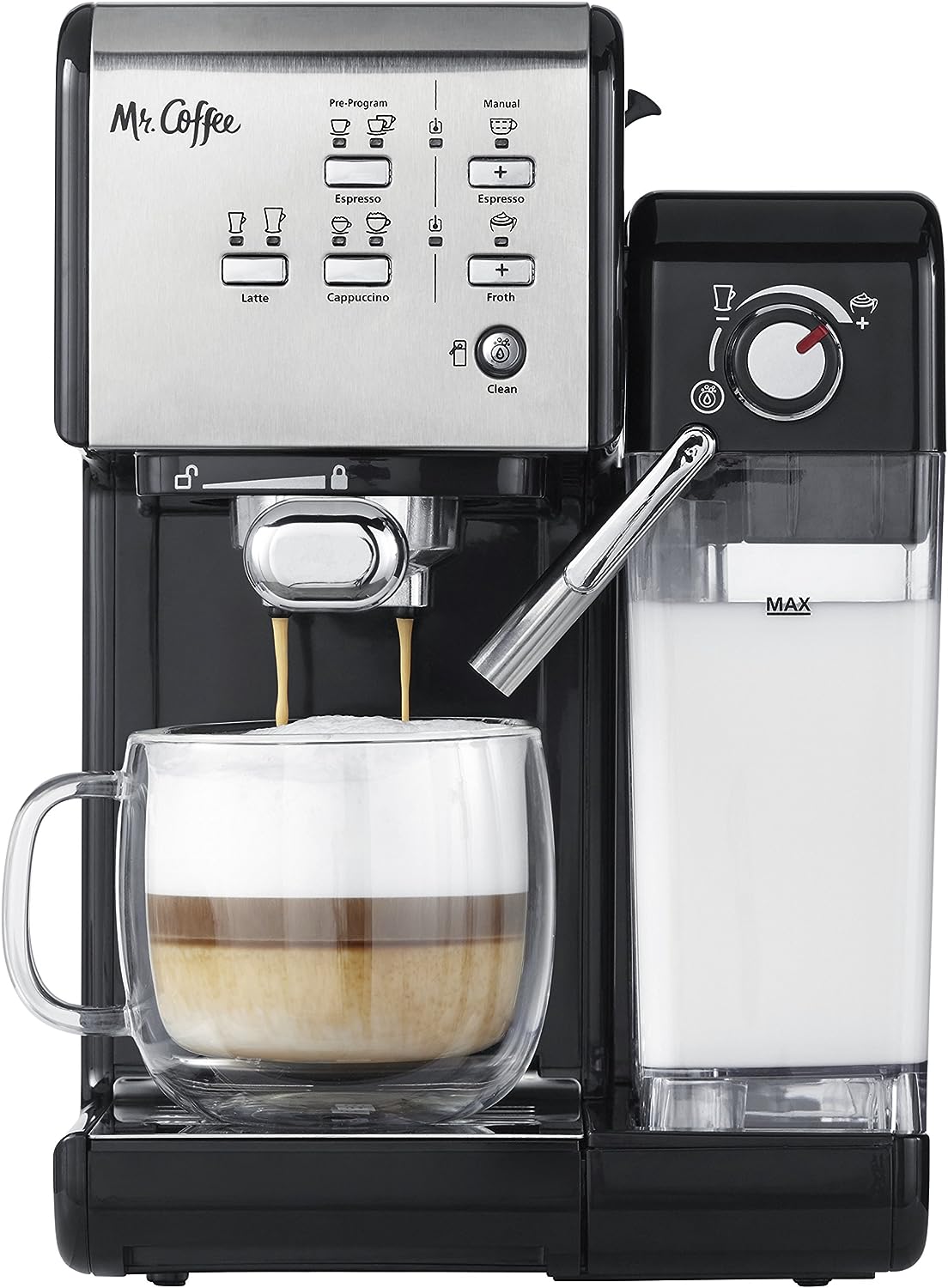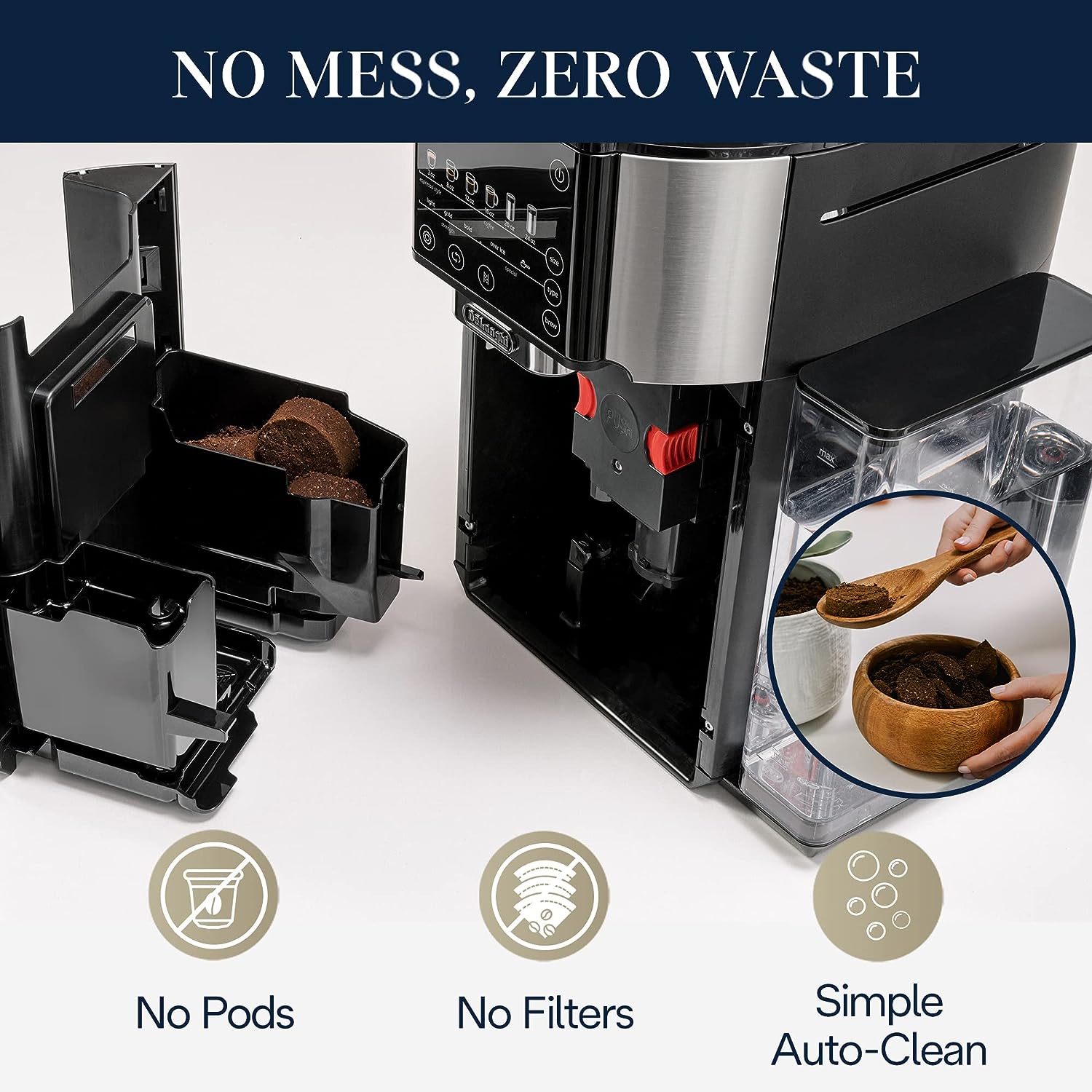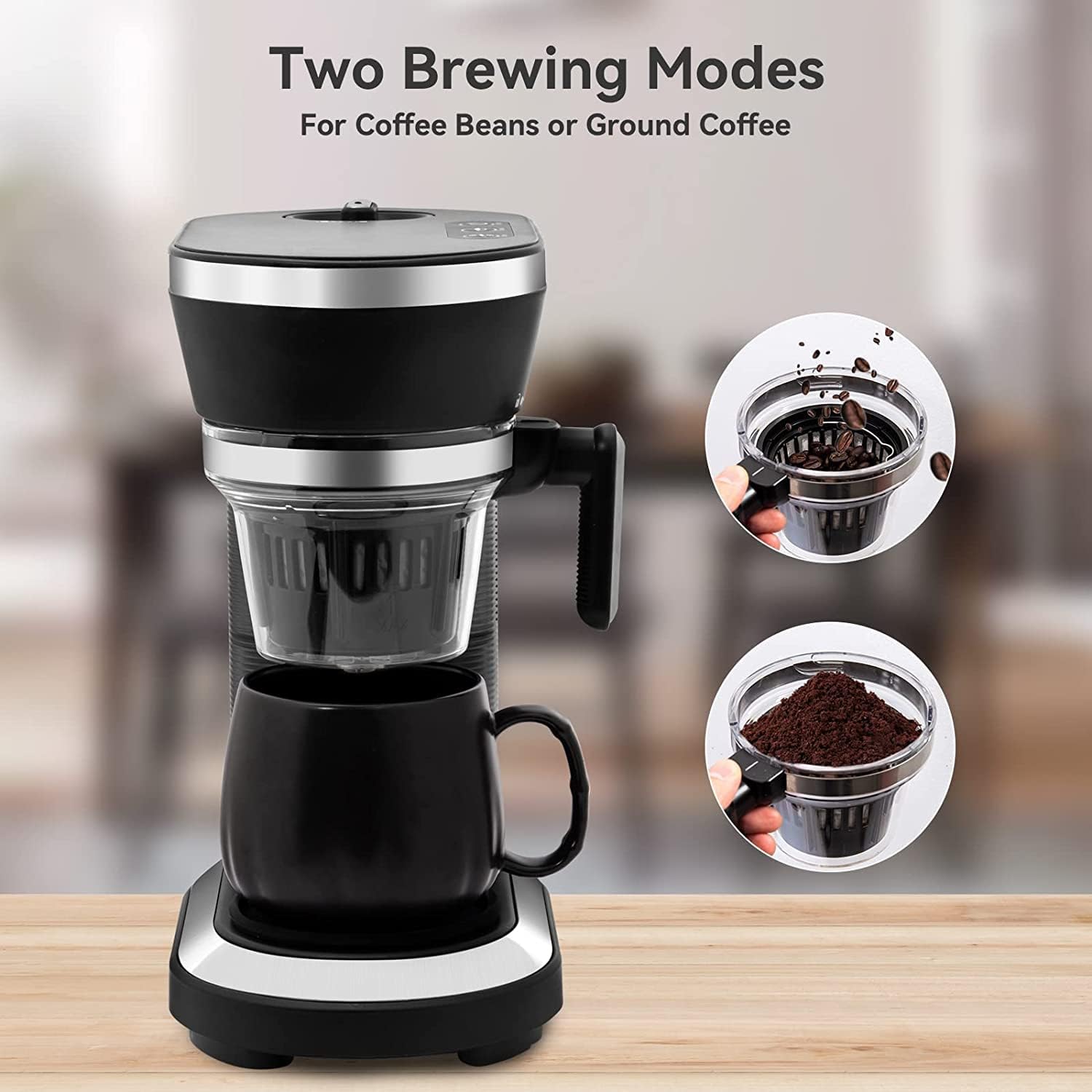Are you a coffee lover stuck with whole beans and no grinder at home? I’ve been there too, so don’t worry, because it’s far from the end of the world. In fact, research indicates that there are plenty of effective ways to grind your precious beans without using a grinder.
As we explore these inventive methods in this article, prepare yourself for a thrilling DIY journey that promises an exquisite cup of Joe every time!
Key Takeaways
- There are several alternative methods to grind coffee beans without a grinder, including using a mortar and pestle, blender or food processor, rolling pin, knife, or even a hammer.
- Using a mortar and pestle allows for control over grind size from coarse to fine according to brewing method preference.
- A blender can be used as a suitable substitute for grinding coffee beans without a grinder by pulsing and shaking the blender jar until reaching the desired grind consistency.
- Other methods such as using a rolling pin, knife, or hammer can also be effective when no other options are available.
Different Methods to Grind Coffee Beans Without a Grinder
There are several alternative methods to grind coffee beans without a grinder, including using a mortar and pestle, a blender or food processor, a rolling pin, a knife, or even a hammer.
Using a Mortar and Pestle
As a coffee enthusiast, grinding your own beans can elevate your brewing experience even without the presence of a grinder. A mortar and pestle, an age-old kitchen tool that can be found in most homes, is a great alternative. Here’s how to use it:
- Start by pouring a small amount of coffee beans into the mortar. This ancient tool is perfect for achieving consistency in your grind.
- Hold the pestle with one hand and the mortar with another then start pounding gently on the beans.
- Continue this crushing action, rotating the pestle around to ensure all beans are broken down.
- For a coarse grind just like for French press or cold brew, stop when all beans have been cracked into larger chunks. If you want a medium grind which is ideal for drip coffee makers, keep going until all pieces look equally sized and feel like rough sand.
- For an espresso-like fine grind, continue grinding until most chunks have reached the consistency of sea salt or finer.
- One important thing to remember when using this method is not to rush it as quick movements can lead to inconsistent grinds or even send beans flying out of your mortar!
- Use only small batches at a time for control over grind size and consistency.
- Always clean your tools before and after each grinding session to maintain the purity of flavors.
Using a Blender
One method for grinding coffee beans without a grinder is by using a blender. This kitchen appliance can be a suitable substitute for a coffee grinder, as the blades in the blender work similarly to the burrs in a grinder. Here’s how you can grind coffee beans with a blender:
- Start by measuring the desired amount of whole coffee beans you want to grind. Remember that freshly ground coffee tastes better, so it’s best to grind only what you need for each brew.
- Pour the measured coffee beans into the blender pitcher or jar. Make sure not to overload the blender, as this can affect the grind consistency.
- Securely attach the blade assembly to the top of the blender jar and ensure it is tightly sealed.
- Place the lid on top of the blender and make sure it is properly fitted to avoid any accidents while grinding.
- Start by pulsing the blender on low speed for about 10 – 15 seconds at a time. This will help break down the coffee beans into coarse grounds.
- After each pulsing cycle, gently shake or swirl the blender jar to redistribute any ungrounded beans and achieve an even grind.
- Continue pulsing and shaking until you reach your desired level of fineness or coarseness in your coffee grounds. You can adjust this based on your personal taste preference or brewing method.
- Once you’ve achieved your desired grind consistency, carefully remove the lid and pour out your freshly ground coffee into an airtight container or directly into your coffee maker for brewing.
Using a Rolling Pin
When you find yourself without a coffee grinder but still craving a fresh cup of joe, fear not! There are alternative methods to grind your coffee beans by hand. One simple and effective option is using a rolling pin. Here’s how to do it:
- Start by placing a small amount of coffee beans in a Ziploc bag. It’s best to grind only as much as you need for your immediate brewing.
- Seal the bag, making sure to remove any excess air. This will prevent the bag from bursting while grinding.
- Lay the bag flat on a sturdy surface, such as a kitchen counter or cutting board.
- Using a rolling pin, apply gentle pressure to the bag of coffee beans. Roll the pin back and forth over the beans, crushing them into smaller pieces with each pass.
- Continue rolling until you achieve the desired consistency of your coffee grounds.
Using a Knife
When grinding coffee beans without a grinder, using a knife is another method you can try. Here’s how:
- Start by placing a small amount of coffee beans on a cutting board or sturdy surface.
- Use the flat side of a large kitchen knife to press down on the beans, applying firm and even pressure.
- Begin crushing the beans by rocking the knife back and forth in a sawing motion. Make sure to keep your fingers clear of the blade.
- Continue this motion until the beans are finely ground to your desired consistency.
- Once ground, transfer the coffee grounds to a container or coffee filter for brewing.
Using a Hammer
When grinding coffee beans without a grinder, another unconventional method you can try is using a hammer. Here’s how to do it:
- Start by placing the desired amount of coffee beans in a sturdy Ziploc bag or wrap them in a clean kitchen towel.
- Lay the bag or towel on a hard and stable surface, such as a countertop or cutting board.
- Use a hammer to gently crush the coffee beans inside the bag or towel. Make sure to apply even pressure and avoid hitting too forcefully.
- Continue crushing and pounding the beans until they reach your desired grind consistency. Keep in mind that this method may result in slightly coarser grinds compared to using a grinder.
- Once you’re satisfied with the grind, carefully open the bag or unravel the towel to release the ground coffee.
Tips and Techniques for Grinding Coffee Beans Without a Grinder
To achieve the desired consistency and flavor when grinding coffee beans without a grinder, it is essential to pay attention to factors such as grinding time and consistency.
Consistency and Grinding Time
When grinding coffee beans without a grinder, achieving the right consistency and grinding time are crucial for optimal flavor extraction. The grind size determines how quickly the water will interact with the coffee particles during brewing, affecting factors like taste, aroma, and strength.
For example, a fine grind is typically used for espresso machines while a coarse grind is ideal for French press brewing.
To ensure consistency in your ground coffee, it’s important to maintain an even pressure and motion while manually grinding using methods like a mortar and pestle or rolling pin. This will help avoid uneven particle sizes that can result in over-extraction or under-extraction during the brewing process.
In terms of grinding time, it’s essential to find the right balance between efficiency and preventing overheating of the beans. Overgrinding can lead to bitterness in your brew due to increased surface area exposed to heat and air.
It’s recommended to start with shorter bursts or strokes when manually grinding coffee beans without a grinder until you achieve your desired coarseness.
Bean Quantity and Control
When grinding coffee beans without a grinder, it’s important to consider the quantity of beans you’re using and how much control you have over the grinding process. The amount of beans you use will directly affect the strength and flavor of your coffee, so it’s important to measure them accurately.
A general rule of thumb is to use one tablespoon of whole beans per six ounces of water for a standard cup. However, you can adjust this ratio according to your personal taste preferences.
Having control over the grinding process is crucial for achieving the desired consistency and ensuring that all the grounds are evenly processed. Whether you’re using a mortar and pestle or crushing with a rolling pin or hammer, pay attention to how fine or coarse your grounds are becoming as you grind.
This way, you can make adjustments along the way until you reach your preferred texture. Remember that finer grounds result in stronger-flavored coffee while coarser grounds produce a milder taste.
Manual Extraction Methods
When it comes to grinding coffee beans without a grinder, manual extraction methods can be your go-to solution. These methods involve using tools like a mortar and pestle, rolling pin, hammer, or even a knife to crush the beans and achieve the desired consistency.
The best method among these is using a mortar and pestle which delivers the most flavorful results. Crushing coffee beans with a rolling pin involves placing them in a Ziploc bag and gently crushing until you reach your desired grind size.
Alternatively, you can use a knife or meat tenderizer to break down the beans manually. Remember, while these methods may require some extra effort compared to using an electric grinder, they are ideal for those moments when you don’t have access to specialized equipment but still want that perfect cup of coffee tailored to your taste preferences.
Best Practices for Grinding Coffee Beans Without a Grinder
Choose the grinding method that suits your needs best and ensures consistency in flavor and texture. Maintain cleanliness and sanitation throughout the process to prevent any contamination. Experiment with different techniques to find the one that yields the desired results for your coffee brewing preferences.
Choosing the Right Method for Your Needs
When it comes to grinding coffee beans without a grinder, it’s essential to choose the method that suits your needs. Luckily, there are various options available for coffee lovers at home. If convenience and consistency are important to you, using a blender or food processor can be an excellent choice.
The blades in these appliances work similarly to a grinder, ensuring even grinding and desired results. Alternatively, if you prefer a more traditional approach, using a mortar and pestle is highly recommended.
This manual method allows for greater control over the grind size and can result in the best-tasting coffee. On the other hand, if you don’t have access to specialized kitchen tools or simply enjoy improvising, using household items like a rolling pin or hammer can also get the job done.
Ensuring Cleanliness and Sanitation
Cleanliness and sanitation are key factors to consider when grinding coffee beans without a grinder. Keeping your equipment clean not only ensures the quality of your coffee but also prevents any contamination or unwanted flavors.
Make sure to thoroughly wash and dry all tools, such as mortars and pestles, blenders, rolling pins, or knives before using them for grinding coffee beans. It’s also essential to clean them immediately after use to prevent any residue from lingering on the surfaces.
Additionally, using fresh and clean whole coffee beans is crucial for maintaining the taste integrity of your brew. By prioritizing cleanliness and sanitation in your coffee grinding process, you can enjoy great-tasting coffees every time without compromising on hygiene.
Experimenting with Different Techniques for Desired Results
To achieve the perfect cup of coffee, it’s worth experimenting with different techniques for grinding your beans without a grinder. Each method can yield unique results depending on your preferences.
For example, using a mortar and pestle allows you to control the consistency and texture of the ground beans, resulting in a rich and flavorful brew. Grinding coffee beans by hand with tools like a rolling pin or hammer can also offer exciting variations in taste and aroma.
Alternatively, if you prefer convenience, utilizing a blender or food processor can effectively grind the beans into fine particles for a smooth cup of joe. So go ahead and try out these different methods to see which one suits your palate best – you might just stumble upon an innovative way to elevate your morning coffee ritual!
Conclusion
Grinding coffee beans without a grinder may seem challenging, but with the right techniques and tools, it can be easily done at home. Whether you use a mortar and pestle, blender, rolling pin, knife, or even a hammer, there are various methods to choose from based on your preference and available resources.
Experimenting with different techniques will help you discover the perfect way to grind your coffee beans for that fresh and flavorful cup of Joe. So don’t let the absence of a grinder stop you from enjoying freshly ground coffee at home – get creative and start grinding!
FAQs
1. What are some alternative methods for grinding coffee beans without a grinder?
Some alternative methods for grinding coffee beans without a grinder include using a blender, mortar and pestle, rolling pin, or even a hammer and plastic bag.
2. Can I still achieve a fine grind without a grinder?
Yes, you can achieve a fine grind without a grinder by using the back of a spoon to crush the beans or by crushing them with your hands until they reach the desired consistency.
3. Will grinding coffee beans by hand affect the flavor of my coffee?
Grinding coffee beans by hand may require more effort and precision compared to using an electric grinder, but it should not significantly affect the flavor of your coffee as long as you ensure consistent particle size.
4. Are there any tips for getting the best results when grinding coffee without a grinder?
To get the best results when grinding coffee without a grinder, make sure to use freshly roasted whole bean coffees, work in small batches to maintain control over particle size, and experiment with different techniques until you find one that works best for you.






